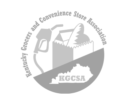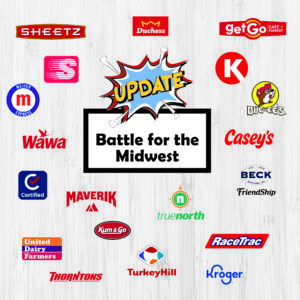
Insights
Why You Need An Automation Journey Map

Investment isn’t enough. To maximize the potential of retail automation technology, companies need a deliberate approach.
Most of the business leaders Impact 21 works with understand the power of retail automation. They see the potential to fully leverage the systems they have in place while taking advantage of more powerful systems and technologies—including computer vision, machine learning, and Augmented Reality / Virtual Reality (AR/VR)—so they can deliver higher levels of efficiency and attract new customers as they transform their business for a new generation of customers. And many are making big investments in retail automation across their enterprises.
Yet many simply aren’t getting the most out of these investments. That is, they’re not enhancing the customer experience the way they’d hoped, they’re not getting more agile, and they’re not improving business processes. Worse, they’re spending too much time trying “to make it work” with their current IT systems.
What’s the evidence? Based on our experience working with clients in the retail, manufacturing, wholesale, and foodservice sectors, we’ve learned the hard way that most companies begin their automation journeys with isolated pilots and piecemeal implementations. The result? Longer implementation times, higher costs, and an ROI that’s not what was expected. This can leave business leaders asking whether the return was really worth all the effort.
The honest answer to this problem?
Mapping your journey.
We’ve found that it’s critical to create a roadmap to deploy automation technologies faster, embed them across the enterprise, and unleash their full potential. This is especially important as Generative AI transforms our industries and ways of working.
In our experience, success requires a step-by-step, enterprise-wide, detailed approach. Long-term automation should be a deliberate, well-thought-out process with milestones, benchmarks, and complete transparency throughout. And decision-makers at every level need to be involved in transforming your workforce (people), systems, processes, and data.
To be sure, there is no one right way to create an automation journey, and your own organization will need to find what works best for your particular situation. The more touchpoints you have and the more disparate your systems are, the more complicated—but necessary—such a map becomes. Regardless of your specific situation, this Assess – Create – Enact framework should get you started.
Assess
Before you think about crafting your automation journey map, you must first benchmark your current level of automation maturity. Begin by posing some questions:
- Where in your enterprise have you implemented automation technologies?
- Have you kept up with the latest version releases?
- What were the initial goals of your automation investment?
- Who is responsible for the success of retail automation in your organization?
- Will the success of your retail automation deployment drive the mission of the larger organization?
- Is retail automation supporting, and supported by, your primary business goals?
- Will achieving success with retail automation make a statement to the organization or the market about what’s most important?
- Will retail automation lead to the execution of your business strategy?
- Is everyone in your organization excited about it? Do you have an emotional connection to it?
And, even more granularly:
- What are the optimal candidates for automation? Remember, the right candidates will be different for every organization. Applications that present themselves as automation opportunities tend to share some common characteristics including the need for frequent and manual updates, rapid scaling, data extracts, or a high degree of personalization.
- Have you established a set of measurements tied to business goals to track progress and results?
- Have you assessed the value that can be achieved from automating a process versus the complexity involved in doing so?
- Have you considered qualitative measures of success, such as increased process performance, improved data quality, stronger governance, better control and greater standardization?
Create
Once you’ve identified opportunities that your business wants to target, it’s time to create your roadmap. This plots the journey from your current “as-is” automation environment to the “to-be” environment envisioned over a period time which will vary with every company.
Our roadmaps delineate the optimal pace, track, and deployment strategy for automation. We take the long-term journey into account too, covering the automation of everything that will need to be automated—at the right time and in a way that will best serve business goals.
The journey map should also include people and talent development at every step along the way. This means mandating development of new skills, developing them in a structured manner, and creating an “automation-first” mindset throughout the company’s culture. To achieve this, there must be an emphasis on encouraging and equipping everyone, not just IT, through ongoing learning, “fail fast” prototyping, co-creation, and other kinds of continuous improvement and innovation. Automation should never be solely the responsibility of a small team. It has to be everyone’s. That’s why, to build automation capabilities at scale, enterprise-wide investment in talent and skills is so crucial.
Enact
At this stage, you should be ready to execute your roadmap. Organizations must sketch out their roadmap on two levels: (1) progress to business results and (2) progress to greater automation maturity. For the latter, it’s best to plan this as a series of steps from where the organization is on the maturity index today to higher levels of automation maturity ahead.
Scale Automation For Real Advantage
Keep in mind that the automation journey isn’t a straight line. And it doesn’t end once your organization has worked its way through the three phases outlined here. Driving automation at speed and scale should be a continuously evolving journey, giving the enterprise the flexibility to adapt, improve, innovate, and realign along the way. Doing this through a structured roadmap with the right measurements will mean the organization is well-positioned to rapidly scale automation and leverage its full power for competitive advantage.
Related Insights
The Changing Role of the CIO
It used to be that a retailer’s chief information officer would spend most of his or her time concerned with […]
Maximize Category Margins – Part 1: Overcoming Challenges Amid Rising Costs
The flood of escalating costs has been an ongoing challenge for retailers. Though balancing the protection of category margins while […]
Convenience Store Midwest Showdown CONTINUES!
A new year is well underway and the convenience store competition in the Midwest continues to make weekly news. Last […]
Want to stay in touch? Subscribe to the Newsletter






